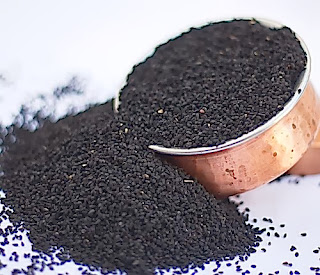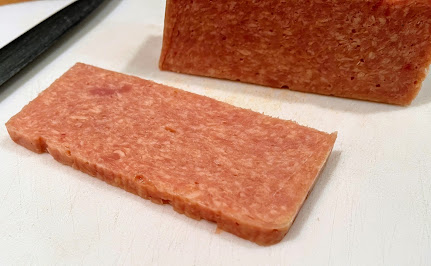Asian Coconut Curry Sauce

Asian Coconut Curry Sauce? I just made this name up last night. I have been making this sauce for over 15 years and have finally decided to write it down. Over the years I have made several variants and versions of this incredible sauce that include many Asian herbs, spices and veggies. The recipe that I have decided to write down is my base version.
There are other herbs/spices and veggies that go great with my recipe but it's entirely up to you what you add. In fact feel free to change the amounts in the original recipe to create your own. I do this every-time I make it.
ASIAN COCONUT CURRY SAUCE
1 can of coconut milk (13-15 oz)
1/3 cup of Fish sauce
1/2 cup of Curry powder
1 Tbl + 1 tsp of Coriander
1 Tbl + 1 tsp of Cumin
1 Tbl + 1 tsp of Garlic Powder (or fresh)
Cayenne powder (optional for heat)
Use a blender to combine everything.
1/2 cup of Curry powder
1 Tbl + 1 tsp of Coriander
1 Tbl + 1 tsp of Cumin
1 Tbl + 1 tsp of Garlic Powder (or fresh)
Cayenne powder (optional for heat)
Use a blender to combine everything.

The above dish contains fresh ginger, green onion and Cilantro too. Again the my recipe is a base sauce that can be used for stir fry, marinade, or just a plain sauce your food with.

I used my all time favorite meat "Skirt Steak".
In a previous blog titled Skirt Steak I discussed in detail everything you ever

You can certainly use other meats. I love using Chicken thighs/Breasts for making Asian BBQ skewers. You could also use Flat- Iron steaks too if you could not find skirt steak. In fact if you wanted you could go vegetarian and not use any meat but that would be sacrilege in my house. I gotta have my meat!!!
My list of ingredients that could accentuate your dish.
- Chilies - There are large chilies, medium chilies, bird's eye chilies, and dried bird's eye chilies. The hotness of the chili is mostly in the pepper's inner tissues. If you are not used to cooking with chilies, cut out this part. You will still get the flavor of the chili but not the hotness.
- Chinese Chives - Generally, the chives that we buy are the European chives. The Chinese chive is more pungent. For cooking, the chives are bought fresh then chopped whole, flowers and all, and used in stir fries and spring rolls.
- Cinnamon (and Cassia Bark) - Know that what you buy in an American supermarket may not be cinnamon although it is labeled as such. It is most likely cassia bark. True cinnamon is from Sri Lanka, in Asian markets and it is labeled as 'cinnamomum zeylanicum' - for Asian cooking, purchase it in rolled up quills rather than ground - they are more flavorful and will last longer. Cassia bark is related to cinnamon and comes from other parts of the world. It is usually used in large pieces for flavoring and then it can be easily picked out of the dish. Cinnamon is always preferred for sweet dishes.
- Fresh Coriander (aka cilantro) - In American markets you may have to ask for fresh cilantro. The more mature plants, used in Asian cooking, are usually found in Asian supermarkets. For Thai cooking, the roots, leaves and stalks are used for green curry paste. In Indian and Chinese cooking, just the leaves are preferred.
- Curry Leaves - A must in Indian cooking. Can be used fresh or dried.
- Fenugreek - The fresh leaves are used rather extensively in Indian cooking. The dried leaves are called 'methi.'
- Galangal - You may see this rhizome in a market and think it is ginger. It is important to know the difference - the galangal appears to have a series of rings around it, fresh ginger is smoother. This rhizome gives an aromatic bitterness to Thai dishes and is known as 'ka' in Thai markets. Better to buy it dried.
- Ginger - This rhizome is very commonly known and is sold in all markets now. It is highly recommended that you use only fresh ginger - the flavor and aroma are well worth it! It is used universally in Asian cooking (nice to peel, chop and boil to scent the house, too).
- Kaffir Lime Leaves - These fragrant leaves are found in Thai markets. They can be used whole, or shredded and mixed into a paste.
- Limes - In cooking valued for acidity, juice and zest. Great in marinades.
- Lemongrass - This is one of the essential ingredients in Thai cooking that is now found here in Thai markets and sometimes in specialty markets. It gives a citrus like sourness to Thai dishes.
- Star Anise - Easily found in American supermarkets, this dried star-shaped fruit is a member of the magnolia family. It has a pronounced aniseed flavor and can be used whole or ground. It is native to China.
- Thai Basil - Because there are at least 3 kinds of basil used in Thai cooking, it is important to buy the right one for your dish as they all taste different.
Spices Used in Asian Cooking:
- Cardamons (green) - Green cardamons are native to Southern India but are now grown throughout tropic areas. To give a subtle flavor to a dish, remove the cardamons before serving.
- Cloves - Easily found in all American supermarkets, cloves are used in most parts of Asia in both sweet, and savory dishes. Remove whole cloves before serving a dish.
- Coriander - Ground coriander is easily found in American supermarkets. In Asian markets it can be found in seed form. The seeds are dry-roasted before using. The ground coriander will lose its fragance if it is stored too long. Only dry-roast what you need for a recipe.
- Cumin - There is white cumin and there is black cumin (Nigella). White cumin is easily found in the market both in seed form and ground. White cumin is used in Southeast Asia. It is usually roasted, ground and used in curry paste. (See black cumin, Nigella, below).
- Fenugreek seeds - Very popular in curry pastes in Southern Indian cooking.
- Five-spice - It usually consists of: cassia, star anise, fennel seeds, anise pepper, some may have cloves as one of the ingredients. This mix is known for being aromatic and not hot.
- Nigella - Nigella is black cumin. Indian cooks usually prefer this cumin to the white cumin. It too, is found in seed form and is then usually roasted, ground, and mixed in curry paste. This is my favorite thing to add to chili.
- Seven-spice - Seven-spice is also known as Japanese shichimi. It is a blend of fragrant spices that include: tangerine peel, poppy and sesame seeds and seaweed flakes. A hot blend of Seven-spice would include ginger and sansho pepper.
- Turmeric - the warm yellow color of this spice makes us think of saffron - but it definitely cannot be a substitute. Turmeric is sold all over the US and adds a distinctive flavor to Asian festival dishes.
- Sesame seed oil -I would be remiss if I did not include this. I love this stuff.
Mix and match all the Asian sauces and spices.
 |
| LEMON GRASS |
 |
| Kaffir Lime Leaves |
.jpg) |
| STAR ANISE |
.jpg) |
| GINGER |
 |
| GREEN ONIONS |
 |
| CARDOMAN |
 |
| NIGELLA SEEDS |
 |
| Galangal |





Comments
Post a Comment